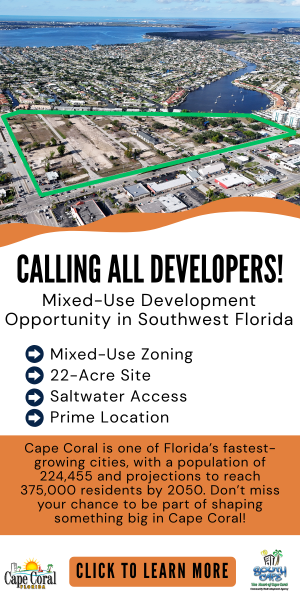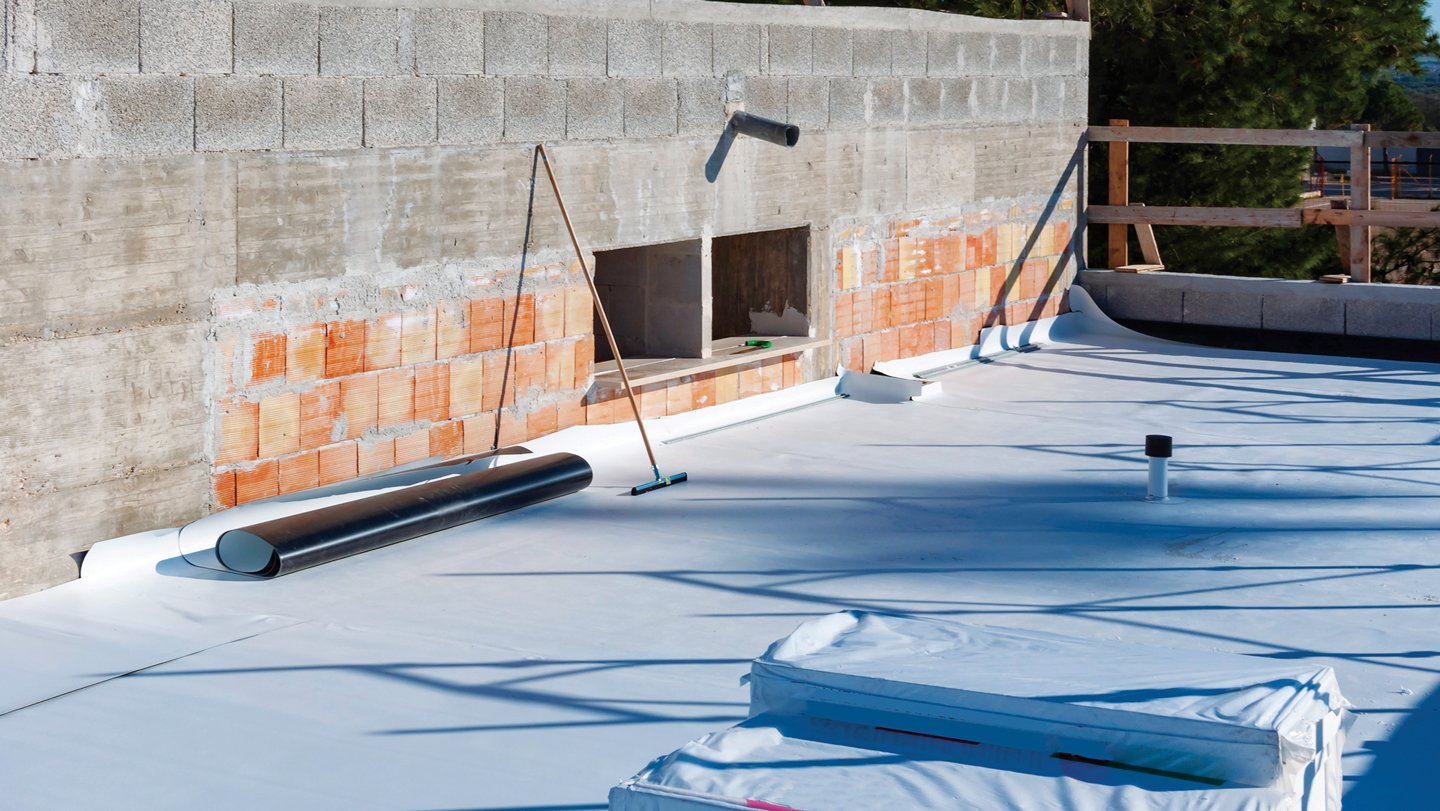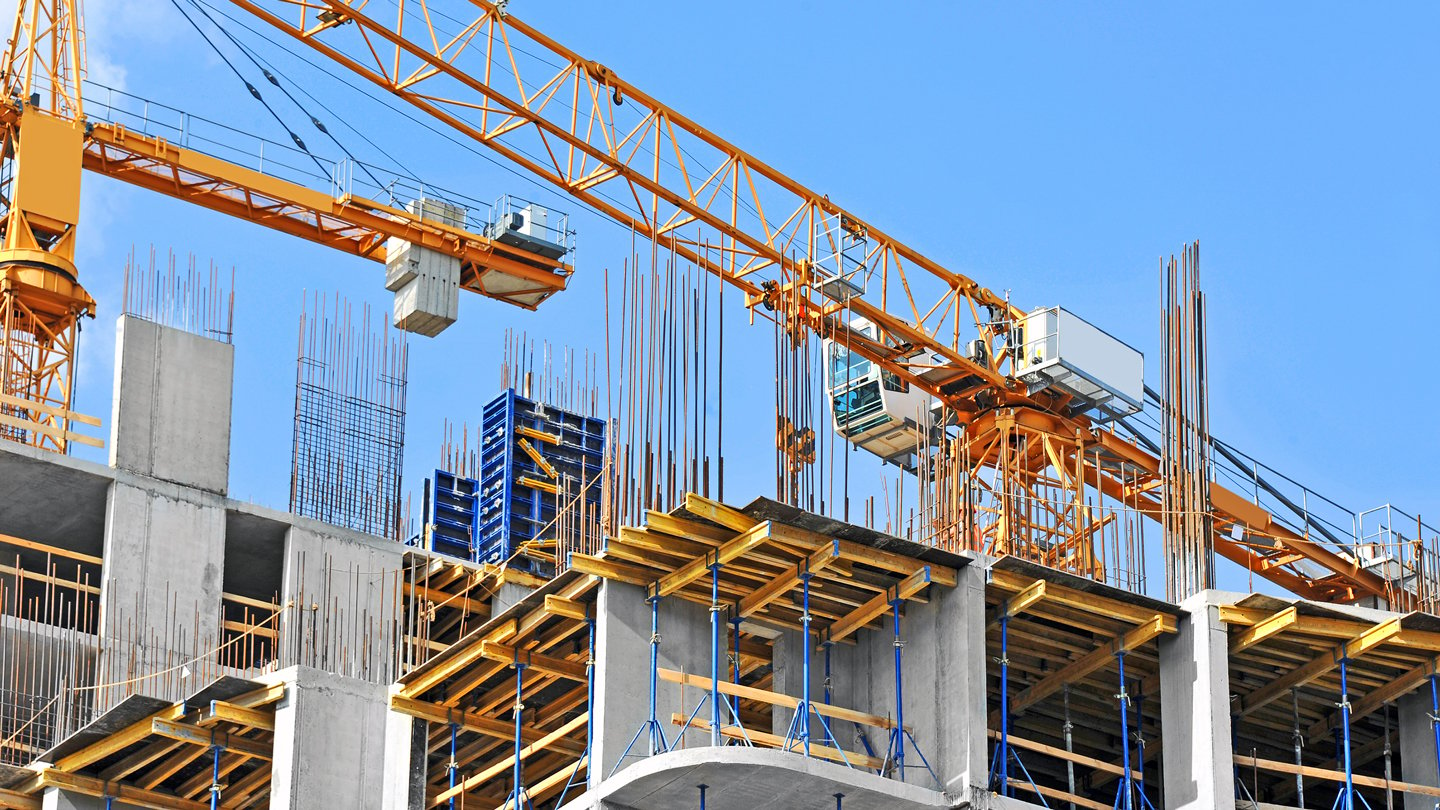Buffalo, New York: A New Take on Grit

A Rust Belt city rebounds thanks to catalyzing state and federal investments.
The city of Buffalo, New York, had a reputation for being gritty.
The term was a nod to the city’s industrial heritage, hard-working people and maybe even the NFL team. But the Buffalo that is now being built could be characterized by a different type of grit. The city is determined to build a better future by welcoming new opportunities within technology, entrepreneurialism, advanced manufacturing, clean energy transfer and more.
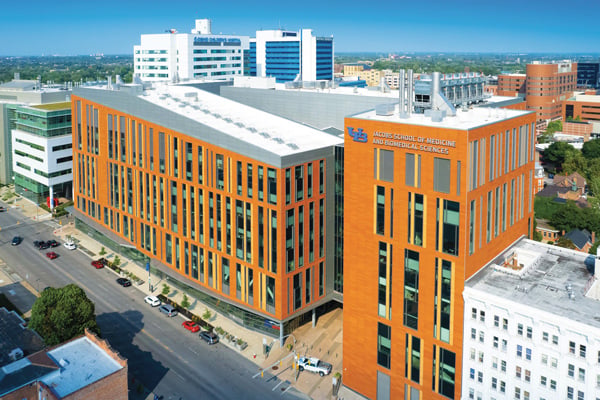
The Jacobs Institute is a vascular medical technology innovation center on the Buffalo Niagara Medical Campus in Buffalo. It’s one of two technology corridors in the city. University at Buffalo-DouglasLevere_UB-JacobsInstitute
Over the past five years, an estimated $22.6 billion of development has launched within the eight counties that constitute the Buffalo Niagara region. This includes construction at the Buffalo Niagara Medical Campus, new coworking spaces, the Northland corridor manufacturing and clean energy cluster expansion, increased residential real estate, hotels, industrial plants, food processing facilities and more.
The Buffalo region routinely enters into national and even global news coverage with significant project developments, innovations and large-scale transformations. For example, Joshua Aviv, the CEO of locally based electric vehicle charging startup SparkCharge, introduced President Biden at a White House event in August 2022 celebrating the passage of the CHIPS and Science Act, which aims to boost American semiconductor research, development, and production. SparkCharge was founded at Syracuse University in 2007 and has been headquartered in Buffalo since 2019.
On The Rise
Founded in 1832 as the eastern terminus of the Erie Canal, Buffalo has experienced several cycles of growth and decline. The city’s population reached more than 580,000 in the late 1950s, but it fell over the next few decades, reaching a low of 261,000 in 2010. However, the latest Census data shows that Buffalo’s population grew for the first time in decades. The city’s population in 2020 was 278,000, an increase of 7% from 2010. Among Rust Belt cities, only Columbus, Ohio, and Ann Arbor, Michigan, saw more considerable population gains during the past decade.
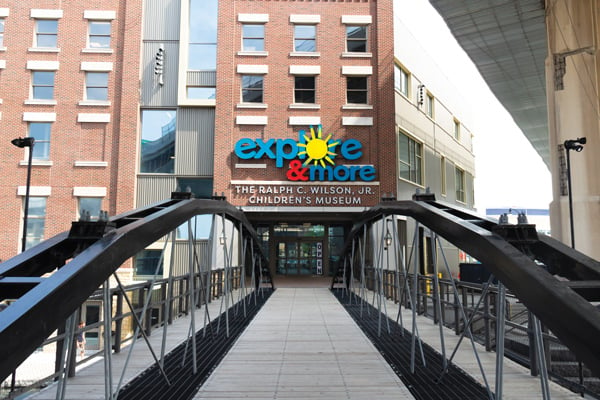
The Explore & More Children's Museum is part of the burgeoning Canalside district, which is located at the end of the Erie Canal. The area is Buffalos redeveloped waterfront.
In 2012, New York State pledged to strategically invest over $1 billion in the region. Target areas included advanced manufacturing, health and life sciences, and tourism, as well as entrepreneurship and workforce development. In January 2017, New York state expanded the program by $500 million.
In addition to investments, much of Buffalo’s recent rebirth can also be attributed to a growing population of refugees and immigrants, as well as a surge in the number of millennials moving back home or calling Buffalo home for the first time. Burmese, Bengali and many other new Americans are choosing Buffalo for its affordability, job opportunities, and to join family members who have previously made the move and are sharing their experiences. According to a 2016 study, Buffalo’s foreign-born population rose by 95% between 2006 and 2013.
Many of those newcomers are drawn to Buffalo’s affordable housing. The 2022 Demographia International Housing Affordability study by the Urban Reform Institute and the Frontier Centre for Public Policy found that Buffalo ranks as the ninth-most-affordable city for housing in the world. (Nearby Rochester ranked No. 3.) In August 2022, the median home price in Buffalo was $175,000, according to Realtor.com. (The Federal Reserve Bank of St. Louis says the median home price in the U.S. was $440,300 in the second quarter of 2022.)
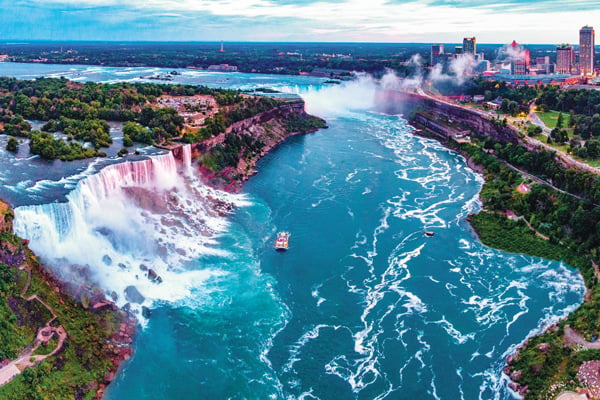
Niagara Falls is a world-famous attraction a few miles north of Buffalo, but the river that feeds it is also an important source of hydropower in the region.
The Buffalo Niagara region has 21 colleges and universities that graduate 25,000 students annually. University at Buffalo (UB) is the largest university in Western New York by enrollment and research dollars spent. Nearly one in five UB students are from outside the U.S. — around 6,000 international students are enrolled at any one time. With industry booming and companies growing throughout Western New York, this talent is highly desirable.
From Shadow to Beacon
There is perhaps no better symbol of Buffalo’s resiliency than Seneca One Tower. At 40 stories, it is the tallest building in the city’s skyline. In the years following the financial crash of 2008, it stood mostly empty, casting both a physical and symbolic shadow over the city.
Today, Seneca One, owned by Washington, D.C.’s largest developer, Douglas Jemal of Douglas Development, has undergone a complete transformation. Façade improvements, including much-needed paint and streetscaping, make the building more welcoming. Douglas Development even added to the square footage of the property, with annexed buildings increasing streetside retail opportunities and walkability improvements. Rather than sitting empty, the building is now almost fully leased. It’s a crucial part of the city’s thriving technology and entrepreneurial ecosystem.
For example, M&T Bank, the nation’s 11th largest bank, is headquartered in Buffalo. In 2019, M&T committed to creating 1,000 new technology jobs in the city. After conducting a comprehensive site search for a new tech hub where it could house those 1,000 new hires and coalesce its already existing tech talent — eventually totaling over 1,500 individuals — the company chose Seneca One Tower.
Since the announcement, other tenants have followed. 43North, the state-funded startup competition and incubator that awards $5 million annually to startups that win its “Shark Tank”-style competition, has taken a floor in the building, and it brought along many of the promising young companies within its portfolio. Odoo, a software-as-a-service company headquartered in Belgium, decided on Buffalo for its U.S. East Coast headquarters after a lengthy and data-driven decision-making process. It now employs significantly more than the 100 employees it initially promised. AML RightSource originally expanded to Buffalo in the Larkinville neighborhood before hiring so rapidly that it outgrew its office space, eventually relocating its anti-money-laundering compliance operations to Seneca One.
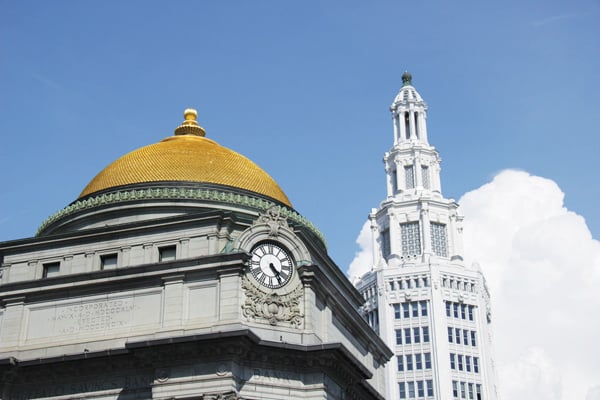
Built in 1912, the Electric Tower was designed by James A. Johnson in the Beaux-Arts Classical Revival style.
The building also features retail, 115 residential apartments, and a location just steps from the city’s redeveloped waterfront known as Canalside, creating the live/work/play desirability sought by young professionals.
Talking Tech
Seneca One anchors one end of Buffalo’s technology corridor while the Buffalo Niagara Medical Campus (BNMC) anchors the other, just over a mile and a half north on Main Street. This helps facilitate the density and range of opportunities needed for a technology ecosystem to thrive.
BNMC, a leader in the life and health sciences sector, is a 120-acre medical campus in downtown Buffalo. It houses a dynamic consortium of hospitals and health care providers, education institutions and research facilities. BNMC is home to world-renowned leaders in oncology, neurosurgery, immunology, vascular surgery, personalized medicine and cardiology.
BNMC is also headquarters for ACV, Buffalo’s first software unicorn. The mobile platform for car dealers to buy and sell cars was a Year 2 winner of the 43North competition, eventually earning a valuation well over $1 billion and hosting a successful IPO in 2021. ACV now has thousands of employees in Buffalo and across the country.
Rural Sourcing, a company that matches U.S.-based software developers to clients, is yet another technology company that chose Buffalo for a new location. It added the region to its portfolio of eight development centers across the U.S. due to the concentration of technology talent in the region.
A Focus on Advanced Manufacturing
Buffalo Niagara has enjoyed a long history of manufacturing success, and manufacturing is now the third-largest employer sector in the Buffalo Niagara economy.
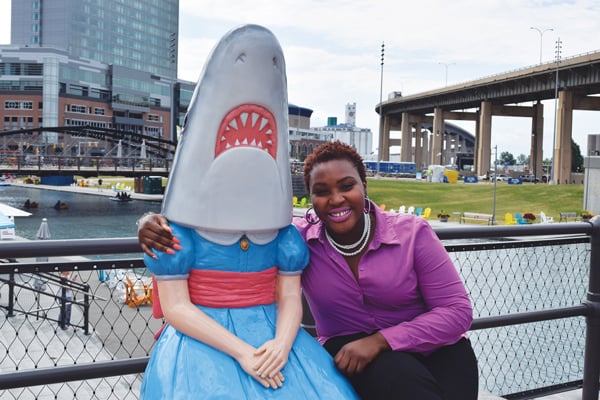
“Shark Girl,” by artist Casey Riordan, is one of the most-visited attractions within Buffalo’s popular Canalside development.
Companies choose Western New York because of its talent and expertise within the industry. Additionally, the region is a 10-hour drive from 40% of the population of both the U.S. and Canada.
Another draw is affordable power. Industrial electric rates are roughly 15% below the national average, and the New York Power Authority allots low-cost hydropower from the Niagara River and Niagara Power Project to expanding or relocating companies within the region.
A new wave of innovators and builders is changing the future of advanced manufacturing. In 2021, Plug Power announced that its new green hydrogen fuel cell plant will be built at the WNY Science Technology and Advanced Manufacturing Park (WNY STAMP). WNY STAMP is a mega-site in Genesee County, located between Buffalo and Rochester and only a 45-minute drive from the Canadian border. It offers 1,250 acres of land with access to hydropower. The site positions Western New York to capture new opportunities within the clean energy sector.
The city of Buffalo hosts an advanced manufacturing campus centered around the Northland Workforce Training Center (NWTC). NWTC is a state-of-the-art training center for students interested in careers in advanced manufacturing and clean energy, including welding, mechatronics and more. NWTC boasts an 87.6% employment placement rate for its graduates and has minority population enrollment totals of more than 50%. What once was a stretch of dilapidated warehouses is now a place of opportunity in East Buffalo, a historically disadvantaged community.
The Northland Campus also hosts other manufacturing resource organizations and leases space to manufacturing companies. In addition, in September 2022, the WNY regional office of Empire State Development was awarded approximately $25 million through the federal Economic Development Administration Build Back Better Regional Challenge to invest in East Buffalo and accelerate the growth of advanced manufacturing in the region. Of these grant funds, more than $14 million was awarded to BUDC (Buffalo Urban Development Corporation) to accelerate additional development with the Northland Corridor.
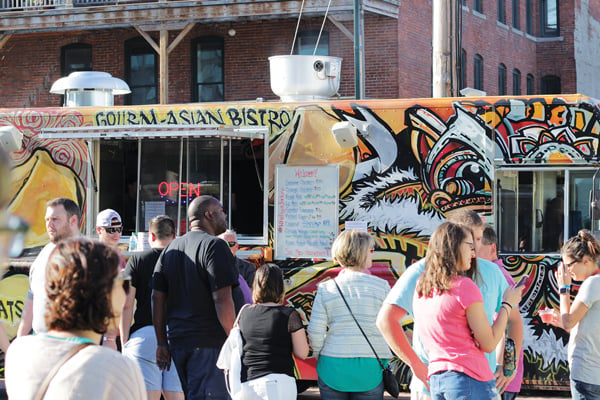
Larkinville is one of many up-and-coming neighborhoods in Buffalo. The former industrial area is now home to shops, offices and Larkin Square, a public space that hosts food trucks and other events.
In March 2021, Invest Buffalo Niagara completed and mobilized the Western New York Industrial Real Estate Strategy, a study focused on improving the availability of industrial buildings and sites in the region through many strategies. Since undergoing the project, three new speculative industrial developments have already been approved and have begun construction, specifically at Renaissance Commerce Park, the former home of Bethlehem Steel.
Making a Place
Canalside, located at the end of the Erie Canal, is Buffalo’s redeveloped waterfront. Many credit the work at Canalside during the past decade for helping to catalyze the region’s resurgence. A once-abandoned area is now one of the city’s premier attractions, featuring green space, a boardwalk, a carousel and a small sand beach for children.
Explore & More Children’s Museum completed its move downtown just a few years ago into a new building, and other mixed-use developments are underway now as additional parcels around the canal continue to infill. The nearby Outer Harbor also features acres of reclaimed recreational land with more developments to come.
A Rich Architectural HistoryIn January 2023, Buffalo was named one of Architectural Digest’s “23 Places to Travel in 2023.” According to the magazine, the city’s industrial heyday “yielded some of the most superlative American buildings of the early 20th century.” These include Louis Sullivan’s tile-clad Guaranty building and Frank Lloyd Wright’s iconic Martin House. Other architectural marvels include Eero and Eliel Saarinen’s Kleinhans Music Hall and Gordon Bunshaft’s modernist auditorium addition to what is now the Albright-Knox Art Gallery. |
Just a few minutes from Canalside, another significant waterfront project is also underway. The Ralph C. Wilson Jr. Foundation has pledged more than $50 million to renovate the former LaSalle Park in downtown Buffalo with a mirrored investment in Wilson’s home city of Detroit. The new Ralph C. Wilson Jr. Centennial Park will contain 100 acres along Buffalo’s waterfront, including a pedestrian bridge that will further neighborhood connectivity. The project broke ground in 2022 and is scheduled to be completed in 2024. (Wilson was the founder and owner of the Buffalo Bills.)
Recently, the city of Buffalo launched its Race for Place, to better connect its urban areas and increase the vibrancy in each. The campaign first focuses on advancing infrastructure investments, streetscaping, increasing pedestrian and bicycle access and safety, implementing smart city technology solutions, and collaborating with other regional campaigns, such as Be in Buffalo, the region’s talent-attraction initiative.
A Resurgence Renewed
The resurgence of Buffalo, with its thousands of job opportunities and investments in its desirability, are not the only factors that may inspire more people to move to Western New York.
The investments in place and community over the last 20 years have made Buffalo a more desirable place to work, purchase a home and raise a family. The successes within the region’s entrepreneurial ecosystem have created more wealth, experience and risk tolerance that will continue to pay dividends. The gains within technology and advanced manufacturing industries have helped to create thousands of jobs.
And the feeling of regional pride — and yes, grit — can sustain a long-term resurgence that writes the next chapter of Buffalo’s history, with different buzzwords and assumptions but driven by the same engine that makes everything possible: the people.
Tom Kucharski is president and CEO of Invest Buffalo Niagara. Brandye Merriweather is vice president of downtown development with the Buffalo Urban Development Corp.
By the NumbersSome statistics about Buffalo: Median income: $42,186 (Source: 2020 U.S. Census) Median home price: $175,000 in August 2022, according to Realtor.com (By comparison, the Federal Reserve Bank of St. Louis says the median home price in the U.S. was $440,300 in the second quarter of 2022.) Office vacancy rate: 16% in the fourth quarter of 2022, according to Cushman & Wakefield Industrial vacancy rate: 4.9% in the fourth quarter of 2022, according to Cushman & Wakefield |


